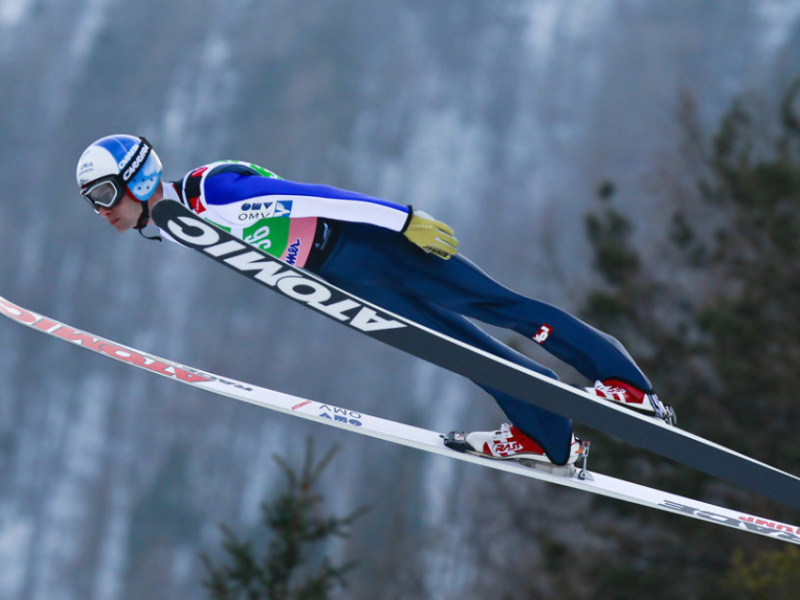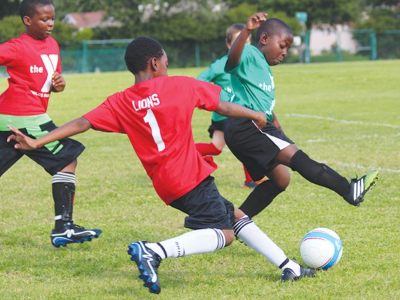How to bet on ski jumping
Ski jumping is by far the most popular winter sport in Western and Central Europe. According to a Nielsen study, in the 2018/2019 season, ski jumping attracted viewers in front of TVs 1.13 billion times. It’s not just about the competitions themselves, but also about interviews, reports or programs related to jumping. Thus, the tournament in Zakopane was watched by almost 47.5 million viewers. The average viewership was also at the same level in the last shortened season due to the pandemic. Of course, the jumps are not only broadcast on television. During the competition in Zakopane the stands burst at the seams and over 20 thousand fans cheer loudly for the jumpers. Ski Jumping is a very interesting sport for prognosticators. For example, a good bookmaker offers up to 100 betting options on ski jumping in early 2021 for the first decade of January-2021 alone. Therefore, there are plenty of options to bet and enjoy watching the competition on the Internet or TV. In our guide, we’ll take a look at ski jumping from a betting shop’s perspective. You’ll learn what sports betting on ski jumping is and where the best place to bet on it is. You’ll also get some tips on the best ways to predict jumps.
MOST INTERESTING MARKETS
Ski jumping is a very popular sport in Europe, and bookmakers offer a wide variety of short and long term bets on it. Jumping is definitely the dominant sport in winter sports bookmakers. According to an expert from a bookmaker’s office, up to 80% of bets on winter sports are on ski jumping. In second place in the ranking are biathlon (8%) and ski racing (6%). Keep in mind, however, that the full betting offer is only available after qualifying before the main event, which is usually the day before the event. We will now look at the most interesting ski jumping markets offered by legitimate online bookmakers.
PRELIMINARY (SHORT-TERM) BETS
There are two categories of betting in ski jump betting. Short-term and long-term. Short term means that they are available immediately before a given event and relate to that particular tournament. Long-term bets are bets for a longer period of time, such as an entire season, or for a tournament consisting of several events, such as the Four Hills Tournament. Both categories contain a number of interesting markets, which will be described below. First, let’s look at the classic one, the short-term one.
BET ON THE JUMPER WINNING THE COMPETITION
The most popular, but very difficult market. The player simply needs to correctly select the winner of the respective competition from among the qualified participants. ~50 competitors can qualify for most events, so it is very difficult to pick a winner of an event without knowing the sport. Last season (1920) there were 27 World Championship tournaments, with 11 players winning. Stefan Kraft had the most wins with 5. These statistics show that the group of potential winners is vast and it is not easy to choose one solid candidate.
In addition, there is the question of the specifics of a particular contest. As you know, the weather aspect is very important in ski jumping and often affects the final result of the competition. Therefore, in order to pick the right winner, in addition to extensive knowledge of the sport, you will also need some luck.
BET ON THE JUMPER’S PLACE IN THE TOURNAMENT(S)
One of the most interesting variants of jumper bets and definitely easier to predict than the winner of the competition. The task of the player is to choose a suitable range of positions, on which his “fork” bets will be placed. The ranges offered by bookmakers are quite extensive, such as 1-3, 1-6, 1-10, etc. Depending on the shape and range of places are set odds. Let’s take a closer look at Markus Eisenbichler’s final bet for the Nizhny Tagil competition.
The German has been in very good form since the start of the 2020/2021 season and is ranked highest in most competitions. Hence the low odds on his lead. Even the odds of 2.5 to win are pretty low for a betting risk. Of course, odds are set individually for players. For some we may choose high spots, as in the case of Eisenbichler, and for others we may choose spots in the range of, say, 20-25.
BETS FOR THE FIRST SERIES
When selecting jumps, a player does not always need to focus solely on the final result of the competition. If desired, he can predict the results of only one series. For example, whether Kamil Stoch will be in the top 10 after the 1st series or whether Kamil Stoch will win the 1st series. The options are many and this is an additional alternative to the ski jumping betting.
BETTING ON H2H
A very competent type of ski jump betting that also generates the most emotion. It consists of choosing which of the participants will be higher than the second at the end of the competition, qualification or 1st series. The gambler must be well aware of the current fitness of the players, as well as their preferences for the hill. Bookmakers offer a very wide range of different “duels” between jumpers, and the players involved in this bet can be combined in different configurations. For example, in the H2H offer, Kamil Stoch can meet in “duels” with several players. Thanks to this, the player decides for himself which risk he wants to take.
If he wants a more sure bet with lower odds, he can choose Stoch vs Kot, and if a riskier option with higher odds, Stoch vs Kraft. There are many configurations, and multiple H2H bets can be made on a coupon. However, you must remember that if we decide to bet, for example, Stoch vs Yla, we cannot select another H2H bet for those players. Such bets have nothing to do with the knockout system known from the Tournament of 4 springboards. There, pairs are allocated based on qualification, and the pairs involved in H2H bets are made by the bookmakers themselves.
OTHER SHORT-TERM BETS
In addition to the classic short-term jump bets described above, bookmakers also offer other, more unconventional markets. These are usually YES/NO or NUMBER/NUMBER bets. These are very interesting options, especially for players who constantly follow the competition and know how to make appropriate conclusions. Here are some examples of bets we can find in the bookmakers’ offerings:
Will he be nominated for the competition? – As a rule, the top 50 jumpers are nominated for the competition. Due to the fact that the qualification is usually around 65 jumpers, we can say that this sieve is not too dense. However, there are players who are not guaranteed to advance up the places ladder, and that is where the betting is on. The more often a jumper gets a pass on previous events, the lower the rate, of course. The bettor’s job is to choose whether or not that competitor will qualify for the spot awarded by advancing to the competition.
Will it advance to the second series? – Of course, this is where the player must choose whether or not a given jumper will make it to the second series. Such bets are mostly applied to players who are most likely to place 20th through 35th in the competition. Among other things, bookmakers set odds. based on how often a given jumper is promoted to the second series or form in recent competitions. An interesting bet for ski jumping gourmets who can gauge the location of competitors even from the third or fourth ten.
Can he break the hill record? – With this bet on Yes, the odds are usually very high, as hill records are not often broken. However, if a player sees the very high form of this jumper and knows that this hill fits his style, it is worth the risk and temptation to bet on this option.
Will the Series 1 winner win the whole competition? – A very simple bet. The player’s task is to predict whether the jumper in the lead after the first round will retain his place at the end of the competition.
LONG-TERM BETS
In ski jumping, long-term bets don’t just exist for the World Cup season. We also deal with them in the case of 4-ski tournaments, Raw Air or top level tournaments such as World Championships or the Olympics. These are the long-term bets that are offered on such events.
BETTING ON A PLACE IN THE FINAL TOURNAMENT CLASSIFICATION
The player has to choose the place that the jumper will occupy, whether it is in the general classification of the World Cup or in the Tournament of 4 ski jumps, for example. This offer includes bets such as:
The jumper’s place in the World Cup – For example, Kamil Stoch will place first in the general classification at the end of the season. The player makes a bet with a yes/no option. The odds on this bet are always high because it takes a lot of time throughout the season. In addition to predicting the winner, it is also possible to bet that the jumper will end up on the podium or in the top ten at the end of the general classification.
The place of the jumper in a given tournament – The principle is exactly the same as above. In addition to the winner, we can also bet on the podium or the top ten. Here, the odds will be a little smaller because the tournament is much shorter than the entire season. Same with other tournaments such as Raw Air or the Flying World Cup.
BETS ON H2H (LONG-TERM)
These work the same way as short term h2h bets, except the question is which player will do better overall at the end of the season or tournament, rather than in a single event. A player can bet on whether the jumper in question will be higher than second at the end of the World Cup, Tournament of 4 ski jumps, and other similar events. It’s the same with team events. A bettor can predict which team will be higher in the team standings at the end of the World Cup season.
OTHER LONG TERM BOOKMAKER BETS IN SKI COMPETITIONS
Which jumper is most likely to make the podium at the world championships?
Which country’s representative will win the crystal ball?
How many points will the winner of the world championships score? – A typical bet is more / less. The player chooses whether or not the winner of the World Championship will overcome the points threshold offered by the bookmaker. For example, the winner of the last full season of the 2018/2019 World Cup Stefan Kraft scored 1,659 points.
SKI JUMPING LIVE BETTING
The bookmakers with the broadest ski jumping offerings also offer live ski jumping betting opportunities. More often than not, it’s a lesser/more bet. Bookmakers offer bets on a regular basis, such as “Will Peter Gila jump to 130 meters”. In this case, of course, the player must predict whether he thinks it is appropriate to bet more or less in this case. In live betting you can bet on H2H, which is constantly updated, mostly after the first series. Bookmakers from the players who came out in the second series create an H2H offer for live betting.














